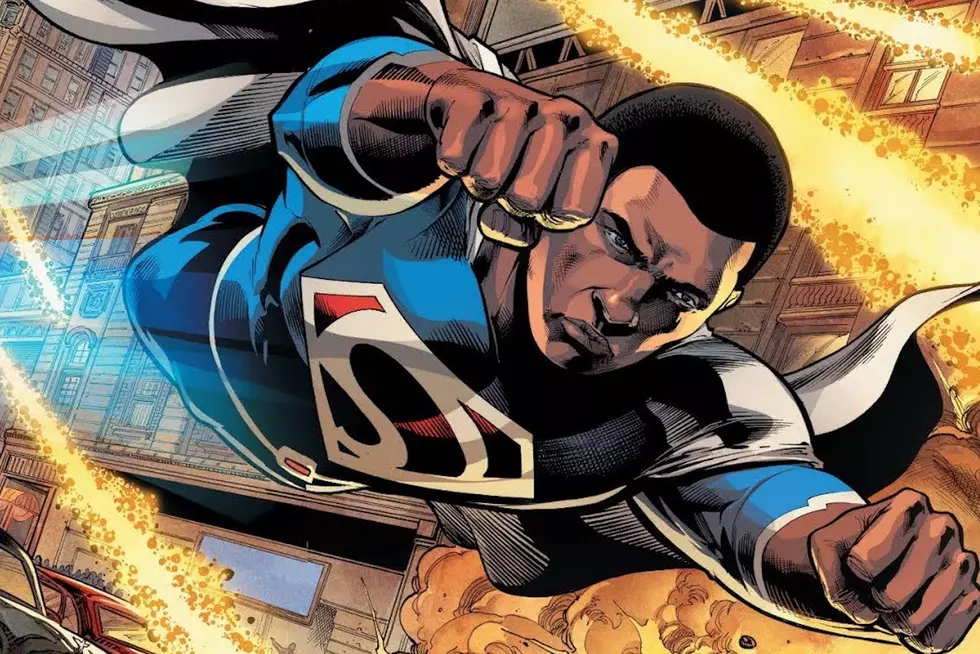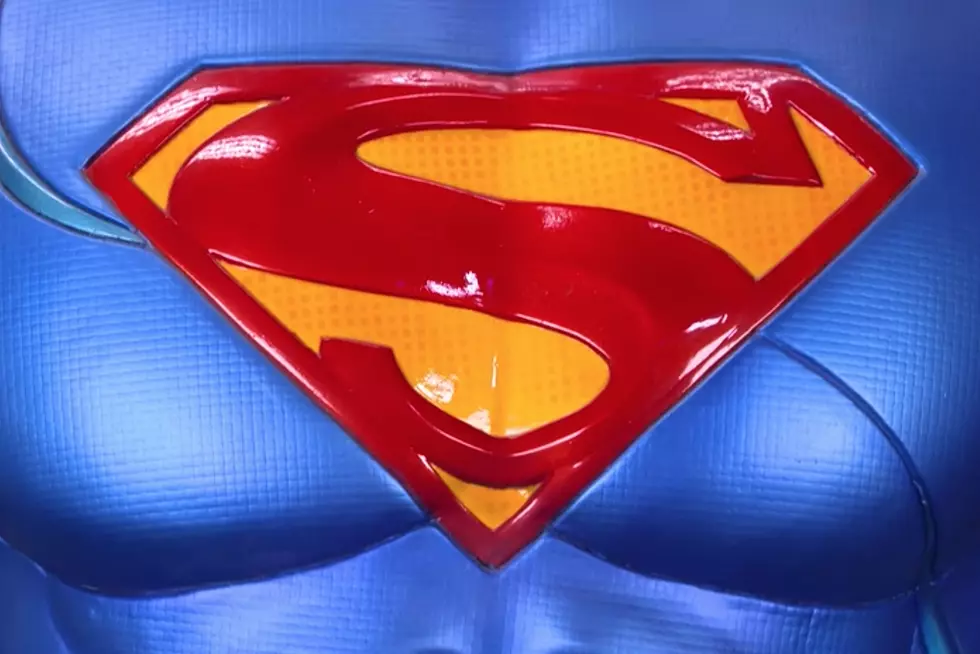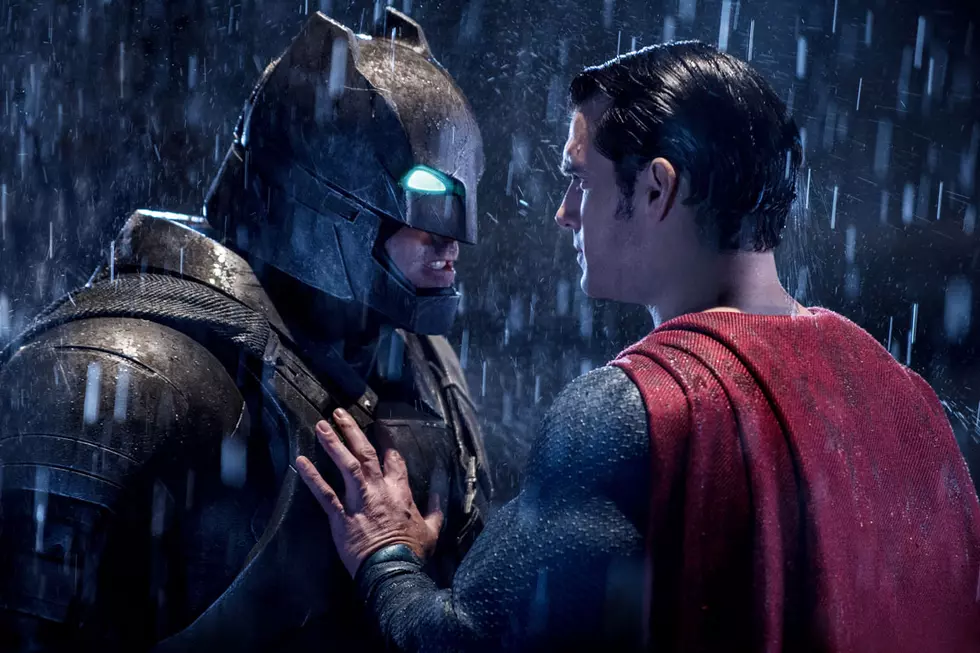![Let The Newbie Have This: Gene Yang On Exposing Superman’s Identity With John Romita Jr. [Interview]](http://townsquare.media/site/622/files/2015/07/Yang01-630x420.jpg?w=980&q=75)
Let The Newbie Have This: Gene Yang On Exposing Superman’s Identity With John Romita Jr. [Interview]
When the DC Universe came out of Convergence, one of the biggest changes came from Superman. Not only was the Man of Steel back in the t-shirt and jeans look that he was rocking back at the start of the New 52, but his secret identity as Clark Kent had been exposed, leaving new writer Gene Luen Yang and returning artist John Romita Jr. to explain just how that went down.
It's a big change in the status quo, so to find out more, ComicsAlliance spoke to Yang about taking on the world's first superhero, collaborating with one of his favorite artists, and changing the dynamics between Clark, Jimmy Olsen and Lois Lane.
ComicsAlliance: What really struck me about this story is that it makes a lot of sense from the perspective of Superman being a character with a secret identity, but it also works as a story that allows you to bring in Jimmy and Lois as well. Was that important for you when you got the job, to make sure you included that core cast of Clark Kent's life?
Gene Luen Yang: When I got the job with Superman, it felt like somebody threw me into the ocean. I was just trying to figure it out, to figure out how to tread water. Lucky for me, I'm part of a great team. Superman's a popular enough character that there are four different titles, Superman with me writing and John Romita Jr. drawing, Action Comics with Greg Pak and Aaron Kuder, Superman/Wonder Woman with Pete Tomasi and Doug Mahnke, and Greg is also working on Batman/Superman with Ardian Syaf.
So one of the first things that happened once we started talking at DC was that they put me in touch with the other creators, and we were given this mandate to do some kind of really big change in Superman. What we came up with was this exposure.
Early on, we wanted our stories to be interlocking, but not interdependent, so someone who only wanted to read one title could, and someone who wanted to read all four could as well, and get something else. We talked about what aspects of the outing of Superman's secret identity each book would take, and I was lucky enough to get to do the setup. I have to say, looking back after I've gotten to play with these characters a little bit, this is pretty amazing. These characters have such deep history, and it's an honor to get to write them for a little bit, but it almost fell into my lap.
I think it was the generosity of the other writers, they were like, "Let's let the newbie have this."
CA: Right. All the other books start with Clark having his secret identity revealed, which is something that asks a big question, and you're the guys who have to provide the answer. Was that something you were happy to do, or were you worried about lagging behind the other books?
GLY: No, it was something like, "This is awesome, but it's going to be so nerve-wracking." Like I said, I feel like I'm really lucky. I have mentors in Greg, Aaron and Eddie Berganza, our editor, and they have really helped guide me through this process. I also feel like it was a mercy for me on their part, that they gave me this segment of Clark's life to play with. They all jumped ahead, so I already have an endpoint. I can read Action Comics #41 and know that that's what I'm writing to, and just go.
CA: We've talked in the past about your other work, I'm a big fan of Loyola Chin, American Born Chinese, the Avatar comics. There are fantastical elements in all of those, but in terms of superheroes, you really went straight from The Shadow Hero to Superman, and those are books that are very tonally different. What was that adjustment like?
GLY: Well, first, thank you for being one of the eleven people who read Loyola Chin. I do think that because Superman is the character that established the genre, he embodies all of these conventions that I grew up with as a superhero fan, and that I play with in The Shadow Hero. All the big pieces of him felt familiar, just from growing up and writing about superheroes. Any superhero, regardless of how different they are from Superman, recalls Superman in some way. They're either pushing against Superman or reflecting Superman; there's something about them that comes from Superman.
CA: In the context of The Shadow Hero being your most recent work before Superman, do you plan on addressing the idea of Superman as an immigrant at all?
GLY: Yeah, that's one of my connection points into Superman, that whole idea that he's an immigrant. I really want to play with that. We started with hints of this in the eight-pager that we put out on Free Comic Book Day, with this group called Humans Only that's xenophobic in the truest sense of the word. They're afraid of things from other planets. That's going to come out, and I do want to play with this underlying notion of belonging, what does it mean to belong to a society and a nation? Those are things I want to explore.
CA: Getting into the specifics of what you're doing right now, I've been asked a lot if I think that the idea of a secret identity is still viable in today's comics. That goes back even further than Superman, all the way back to the Scarlet Pimpernel, but with Hordr, which is hilarious, you're looking into the idea of a world that's full of questions about privacy and online identity and surveillance. There's definitely a pretty clear real-world influence for Hordr, right down to the bus.
GLY: I live in Silicon Valley! I grew up in the Silicon Valley, too, and a few months ago, a friend of mine who works for Facebook invited me onto the campus to eat lunch there. I was like, "This is amazing, it's like Utopia." But then, like all of us, I don't think Facebook is 100% evil, but there are aspects of it that move towards evilness. It's true of all the major Silicon Valley companies, that there are aspects to all of them that move towards evilness, but I don't believe they're 100% evil.
What Hordr is, is me taking all the aspects of these different companies and combining them into this cross between a tech company and a gang, with a leader that's like an evil version of Mark Zuckerberg --- and I say "evil version" because I don't really think Mark Zuckerberg is evil.
CA: You don't get to a million friends without making a few enemies. That's what I've heard.
GLY: [Laughs] That's true. But there are all these interesting questions that come out, and our technology has moved faster than our ability to answer these questions about privacy and where the individual stops and the society begins. I actually looked into this video with a Silicon Valley investor, where he talked about the upcoming federation, the kids who are in Junior High and high school right now, this whole notion of privacy just feels outdated. They're going into life assuming that they're going to be taped and recorded at all times.
CA: Was that something you talked about with Greg Pak? I know that was a big theme in the Vision Machine graphic novel he wrote.
GLY: Yeah, we talked about it. That was part of the Superman meeting that we had. It's the same question that you brought up, wondering if the notion of a secret identity is viable in the modern world.
CA: Along those lines, you have the reveal to Lois. We've seen that in the previous iteration of the DC Universe, but you got to do a different version, where she's a much more active participant in figuring it out and putting the clues together. Was that important to you, in terms of defining Lois Lane as a character for your run?
GLY: Yes. Lois was, from the beginning, an active character. She was never one to let things happen to her, she was always one to make things happen, so it seemed more true to who she is to have her be actively looking for this thing that she's a little bit obsessed with. She's a little obsessed with Superman, as a news story, and it made sense to everybody on the team that she would have an active role in figuring that out.
I came into a very different kind of relationship between Lois and Clark. They're not romantically involved, but there is this underlying romantic tension between them. It's just not on the surface. The last time he revealed his identity to her, they were engaged, they had this long relationship with a lot of history. In the new reality, they're still pretty early in their friendship, and all of those things make it feel very different.
CA: One thing that I really enjoy is the way that you take these very realistic ideas about privacy and protecting your identity, but you do it in a very superheroic way, where the evil search engine also makes giant murder-bots.
GLY: [Laughs] Yeah, we didn't get a chance to show the origins of those robots, but they're all 3D printed. That'll come up later.
CA: I'm a huge Jimmy Olsen guy, too, and I feel like since about 1986, Jimmy's been out in the woods. He's this very important part of Superman's history, but in a context where he can't be the character that he was for so long, you don't see much of him. I really like the idea that you specifically have him say, "I'm your best friend." He's the guy who knows the secret, who teams up with him. That was in place before you were on the book, but how do you approach that friendship and make him a viable character?
GLY: That's actually the part of the book that I like writing the most, the relationship between Clark and Jimmy. It feels familiar to me. I have these relationships with these guys, a lot of my close friends, usually when we talk, it's just about ridiculous and stupid things, but you also understand them. We understand that there's something deep underneath the stupidness that lies on the surface. That's kind of how I look at Clark and Jimmy and how their relationship plays out.
Something else was the idea of how Jimmy tires to be Clark's Robin, at least emotionally. He has all the courage and all the spirit, the insight, he just doesn't have that training that Robin has. That makes for an interesting dynamic.
CA: You're probably best known as a cartoonist, drawing books like Boxers & Saints, but you also worked with Sonny Liew on Shadow Hero. What was it like to inherit John Romita Jr. as your collaborator?
GLY: It was a blessing. It was crazy. It was my 14-year-old dream come true. When I was in high school, I would go to the local conventions, and I remember going to one where it was Jim Lee, Ron Lim and John Romita Jr., and I stood in line to get John Romita Jr.'s signature. To go from that to actually collaborating with him on the world's first superhero? It's nuts. It's crazy. It's crazy.
I think every time you work with another collaborator, there's an adjustment process where you figure out the other person's strengths, and that has definitely happened for me. I just realized that John is great at a lot of things, but one of the things he's best at is choreographing action. He's able to take something that's kind of mundane on the page and make it into something amazing when he draws it. I've slowly figured out how to adjust to that, how to take advantage of that --- not even take advantage, but give him the space, how to give him the space to do what he does best. It's awesome. I'm learning a lot, and I'm hoping I can pull it into the other books I'm doing.
Iconic and Inspiring Superman Images
More From ComicsAlliance









